Google Pixel Tablet Review: This Isn't Your Average Tablet - Gear Patrol
The Pixel Tablet is the first tablet that Google has released in years. However, don't let its name fool you — it's not just a tablet. It comes with a speaker dock that, when magnetically connected to it, turns the Pixel Tablet into a smart display á la Google's Nest Hub Max ($299). So it's actually a two-in-one device.
When you pick it up, the Pixel Tablet goes into "tablet mode" and functions as an Android tablet. When placed down on the speaker dock, it goes into "hub mode" and functions as a smart display that responds to "Hey Google" voice commands. The Pixel Tablet also wirelessly charges when attached to the speaker dock.
As a standalone tablet, you can think of it as a rival to Apple's mainstream 10.9-inch iPad. The Pixel Tablet has an 11-inch display, runs the latest version of Android and is powered by the same chip (Tensor G2) that Google has packed into its Pixel 7 smartphone.
The catch? Google's new device costs $500, which isn't cheap for a non-productivity-focused tablet. So you really have to lean into the hybrid use-case of both wanting an Android tablet and a Google smart display for this to make sense.
Google Pixel Tablet: What We Think
The Pixel Tablet is two gadgets combined in one. It's a good entry-level Android tablet and a very good Google smart display that, when taken as two separate things, are both quite expensive. $500 is more expensive than Apple's entry-level iPad (which starts at $329), and a bunch of other companies (such as Samsung, OnePlus, Lenovo and Amazon) all make similar-sized Android tablets for less. On the smart display side, Google's Nest Hub Max ($299) is basically the Pixel Tablet if it were permanently on its speaker dock. Basically, you're paying a premium for the Pixel Tablet's versatility.
Aside from the price, however, there's not much to really knock the Pixel Tablet for. It works well as a tablet and a smart display (the latter of which can also function as a digital picture frame or smart alarm clock). And because it's so versatile, you'll likely use it more than you would with a standard smart display and tablet.
You're going to use it mostly as a smart display.
Anytime you're not actually holding the Pixel Tablet, it's likely going to be resting and wirelessly charging on the speaker dock — that's basically its home — and it'll work as a smart display. This actually makes it a lot more useful than most other tablets, which you likely place down and forget about until the next time you pick it up.
As a smart display, the Pixel Tablet works just like any Google's Nest smart displays, the Nest Hub ($99) or Nest Hub Max ($229). It responds to "Hey Google" voice commands and it'll give you both auditory and visual answers. When you ask it about the weather, it'll answer and show you a forecast. When you ask it a measurement question, it'll show you how many ounces are in a pound. When you ask it to play a song, it'll show you album artwork. And if you use Google Photos, you can set it up to work as a digital picture frame when you're not using it.
It's a tablet for fun, not work.
The Pixel Tablet is a pretty snappy tablet that runs very much like a big-screen Pixel smartphone. After-all, it's powered by the same chip and runs the same Android OS as the Pixel 7. That said, the Pixel Tablet is not designed as a premium productivity machine like, say, an iPad Pro. Google isn't really making any transformative accessories (such as a keyboard, folio, mouse or stylus) for it. There's no LTE model available, either. It doesn't have a fancy camera system. And the display maxes out at 60 Hz.
The Pixel Tablet is very much a tablet that's meant to do the same kind of casual things you'd do on a smartphone— like browsing the web or Instagram, watching shows on Netflix or (HBO) Max, playing a game or even answering a video call — just on a bigger screen. Then when you're done, you can place it back on the speaker hub and use it as a smart display.
The transition from tablet to smart display is pretty seamless.
One of the best things about the Pixel Tablet is that it's very intuitive in the way it switches between "tablet mode" and "hub mode." There's no delay or awkward transition. When you pick the Pixel Tablet off of the speaker hub, you just have to unlock it as you would any other tablet; you either enter a PIN code or there's a fingerprint reader integrated into the power button. Then when you put it back on the speaker hub, it doesn't abruptly change views or stop what it's doing. For example, if you're playing a video on YouTube when in tablet mode, it won't stop playing that video when placed on the speaker dock.
The sound is better when connected to the speaker dock.
The only thing that does change when going from tablet mode to hub mode (and vice versa) is the sound. If you're playing a video or music, the audio will automatically start playing from the speaker dock when the Pixel Tablet is placed on it. If you pick the Pixel Tablet up off of the speaker hub, the audio will switch to playing from the Pixel Tablet's built-in speakers. Unfortunately, there's no way to play audio from the speaker the hub when the Pixel Tablet is lifted off it.
Not surprisingly, the Pixel Tablet sounds better when magnetically connected to the speaker dock. The tablet has four built-in speakers that can play stereo sound, which admittedly sound good, not great — but the dock's larger full-range speaker gets significantly louder and delivers a much cleaner sound.
You don't have to have a Pixel smartphone to have get a Pixel Tablet
The experience of using a Pixel Tablet is going to feel most familiar for those who have an Android smartphone (and especially a Pixel) as it runs an Android operating system. There are a few features that will be exclusive to Android smartphone owners, such as Nearby Share (send files/photos between Android devices) and Chromecast built-in (so you can quickly hand-off and share what you're listening to on your phone to the docked tablet).
That said, the Pixel Tablet can still make sense for an iPhone user. If you have a smart home around Google's smart home ecosystem then you're going to interact with it mostly as a smart display just like you would with a Google smart speaker via "Hey Google" commands. And if you have other Google Home speakers, you'll be able to group the Pixel Tablet with them in a multi-room system.
Additionally, if you're an iPhone owner that uses Google's suit of apps and services, like Gmail, Google Calendar, Google Photos, Chrome and YouTube (owned by Google), then the Pixel Tablet will likely feel quite natural. You'll just be seeing most of the same apps you already use on a bigger display.
Google Pixel Tablet: Alternatives
The Pixel Tablet is something unique. There aren't really many other gadgets that can pull double duty as both a standalone tablet and as a smart display. Of course, you can probably get a smart display with Google Assistant and an 11-inch Android tablet for around $500 (or less). On the smart display side, there's the smaller Nest Hub ($99) and larger Nest Hub Max ($299). Google doesn't make any other tablets, so your best bet is to go with a midrange Android tablet from the likes of Samsung, Lenovo or Amazon. The Samsung Galaxy Tab A7 ($230) or Amazon Fire Max 11 ($230) are both solid (and relatively affordable) options.
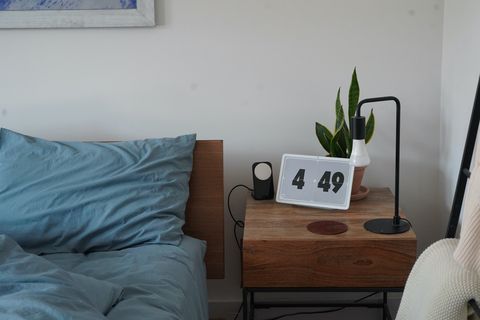
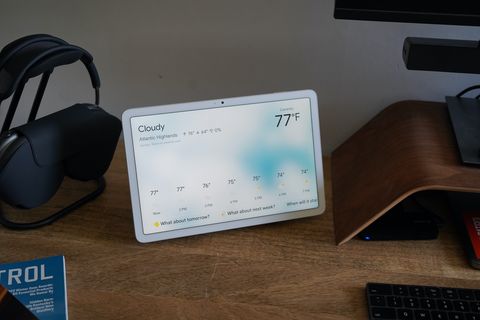

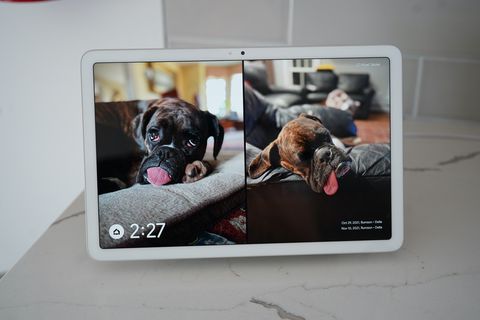

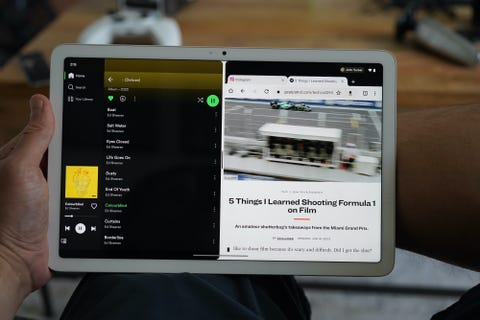


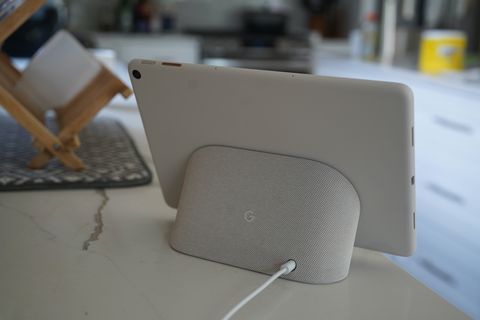

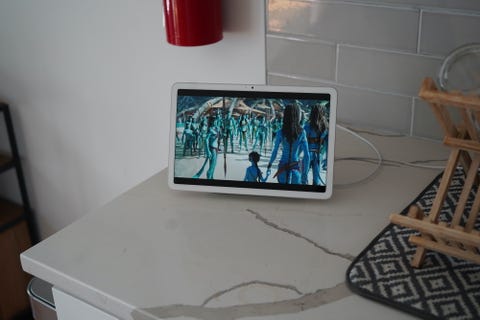


Comments
Post a Comment